Cover Letter: Why It Matters for IT Professionals
In the competitive world of Information Technology, a well-crafted cover letter is your first opportunity to make a strong impression. While a resume provides a detailed overview of your qualifications, a cover letter allows you to connect with the hiring manager on a personal level, showcasing your personality, enthusiasm, and genuine interest in the role. It’s your chance to highlight why you are the perfect fit and to demonstrate your understanding of the company’s needs. Ignoring the cover letter is a missed opportunity and could be the reason your application ends up in the rejected pile. A compelling cover letter acts as a persuasive narrative, guiding the reader through your key strengths and aligning them with the specific requirements of the job.
Highlighting Your IT Skills and Experience
Your cover letter should be a showcase of your IT prowess. Focus on highlighting the skills and experiences that directly align with the job description. Go beyond listing responsibilities; provide specific examples of how you’ve applied your skills to solve problems and achieve tangible results. This is where you can transform your resume’s bullet points into a compelling story. The goal is to create a narrative that demonstrates not only your technical expertise but also your ability to contribute meaningfully to the organization. Using action verbs and quantifying your achievements will add impact to your claims, making you stand out from the competition.
Quantify Your Achievements
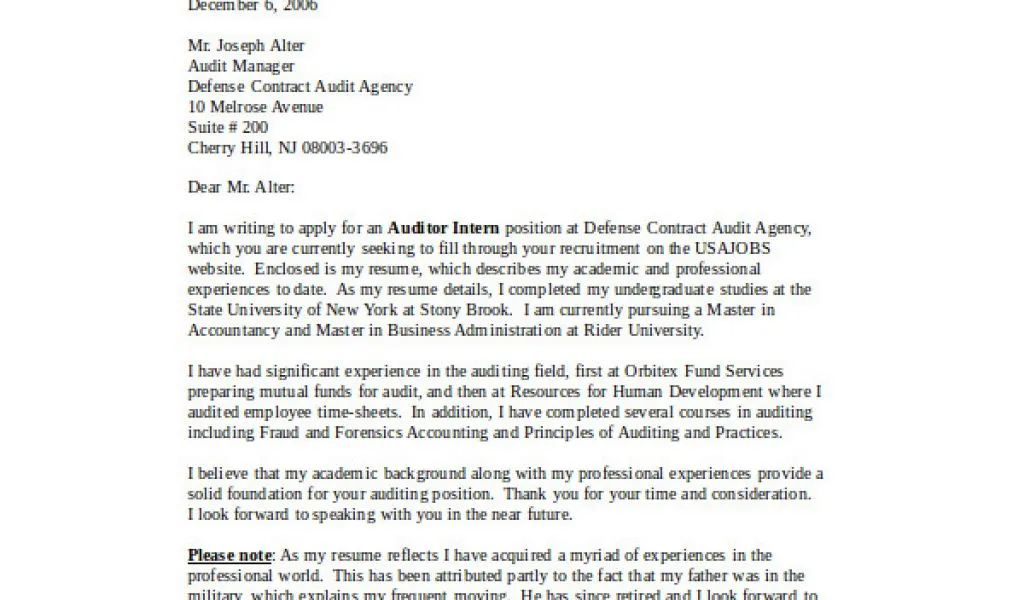
Instead of simply stating you ‘managed a network’, specify the size of the network, the number of users supported, or the percentage improvement in network uptime. For example, you could write, ‘Managed a network supporting 500+ users, resulting in a 15% reduction in network downtime.’ Such quantifiable achievements give hiring managers a clear picture of your impact and expertise. Whenever possible, use numbers, percentages, and specific metrics to demonstrate your accomplishments. This not only adds credibility to your claims but also provides concrete evidence of your ability to deliver results.
Showcase Technical Expertise
Detail your proficiency in relevant technologies, tools, and methodologies. Instead of saying ‘Experienced with cloud computing’, mention specific platforms or services like ‘Proficient in AWS, Azure, and Google Cloud Platform, with experience deploying and managing applications.’ Highlighting specific technologies and certifications (e.g., Cisco Certified Network Associate, CompTIA Security+) makes your cover letter targeted and demonstrates that you have the required knowledge. Tailor your examples to match the job requirements. If the job emphasizes cybersecurity, emphasize your related experiences and certifications.
Demonstrate Problem-Solving Abilities
IT professionals are, at their core, problem solvers. Use your cover letter to illustrate how you’ve overcome challenges. Describe a specific technical issue you resolved, the steps you took, and the outcome. For example, ‘Troubleshooted a critical server outage by identifying a corrupted system file, implementing a rollback, and restoring service within two hours, minimizing business disruption.’ This shows not only your technical competence but also your ability to think critically and act under pressure. The ability to articulate your problem-solving skills is crucial in showcasing your value to a potential employer.
Tailoring Your Cover Letter
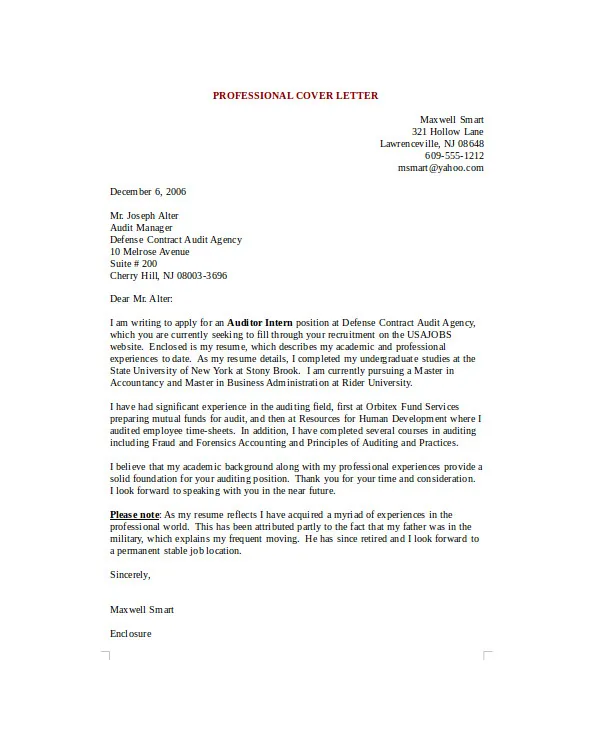
One of the biggest mistakes IT professionals make is using a generic cover letter. To make a cover letter stand out, it must be tailored to each specific job and company. Generic letters often read as if you’re applying for any job that comes along and do not reflect a genuine interest in the company and its culture. This is why it’s essential to customize your cover letter for each application by researching the company, understanding the role, and highlighting the most relevant skills and experiences.
Research the Company and Role
Before writing, research the company’s mission, values, and recent projects. Understand the role’s responsibilities and required skills by carefully reading the job description. Visit the company website, read news articles, and check their social media presence. This will enable you to understand the company’s priorities, culture, and needs. Then, use this knowledge to tailor your cover letter to showcase how your skills and experience align with their specific requirements and how you can contribute to their success.
Match Skills to Job Requirements
Carefully review the job description and identify the key skills and qualifications the employer is seeking. Then, match your experiences and skills to these requirements. Provide specific examples from your past roles that demonstrate your proficiency in the required areas. If the job description mentions ’experience with cloud security’, provide details about your experience with specific security tools, protocols, or certifications. Tailoring your skills and experiences to the job description increases your chances of making a strong impression and getting an interview.
Use Keywords Strategically
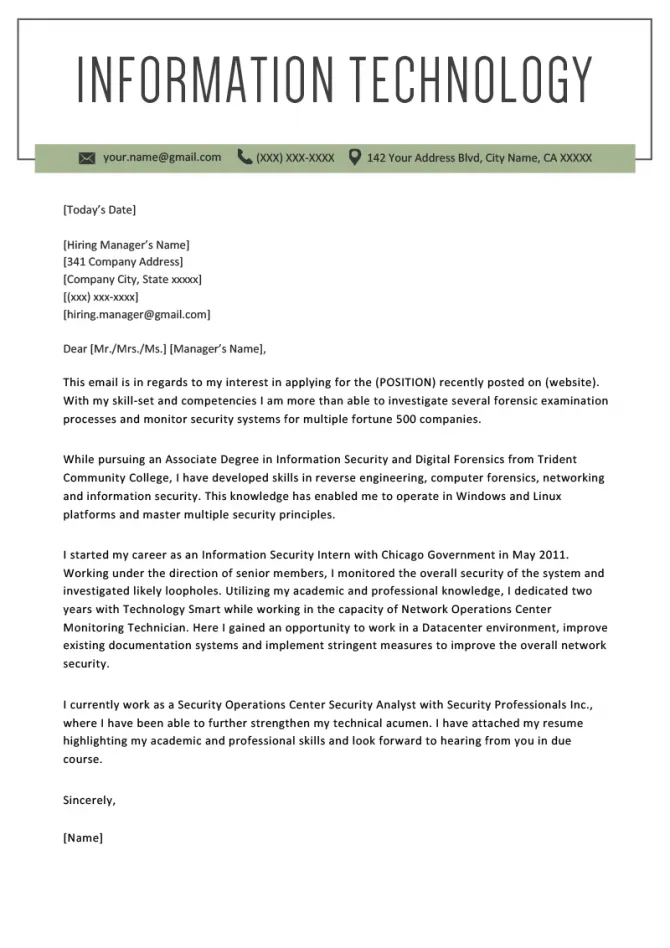
Incorporate relevant keywords from the job description naturally throughout your cover letter. Many companies use Applicant Tracking Systems (ATS) to screen applications. These systems scan for keywords to filter candidates. By using the same language as the job description, you increase your chances of passing through the initial screening phase. However, avoid keyword stuffing. The goal is to integrate keywords seamlessly into your writing to emphasize your suitability for the role. This is not only helpful for passing the ATS but also demonstrates you understand the role requirements and have a better understanding of the company’s needs.
Formatting and Structure for Impact
The formatting of your cover letter is just as crucial as the content. An easy-to-read and well-structured cover letter shows attention to detail and professionalism. A cluttered or poorly formatted letter can create a negative impression, even if the content is excellent. The goal is to make your cover letter easily digestible and visually appealing. Using a clear font, adequate spacing, and a professional layout is key to creating a positive first impression.
Header and Contact Information
Start with a professional header that includes your full name, contact information (phone number, email address, and LinkedIn profile URL), and the date. This is the first piece of information a hiring manager sees. Make sure your contact information is up-to-date and accurate. Consider including your professional title, if you have one. The header should be clean, easy to read, and consistent with the design of your resume. Using a consistent look across both documents enhances your professionalism.
Professional Salutation
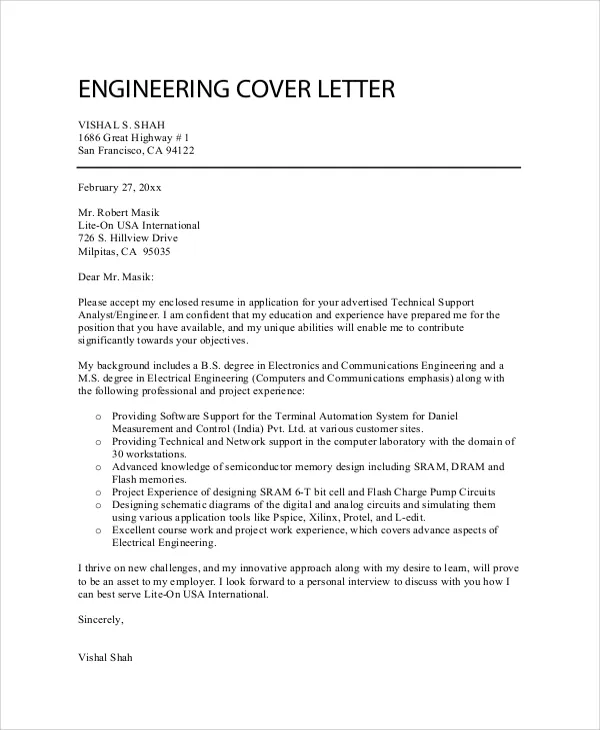
Use a professional salutation such as ‘Dear Mr./Ms./Mx. [Last Name]’ if you know the hiring manager’s name. Researching the hiring manager’s name shows that you care enough to address your cover letter to the right person. If you cannot find a name, use a professional alternative, such as ‘Dear Hiring Manager’ or ‘Dear [Company Name] Team’. Avoid generic salutations such as ‘To Whom It May Concern,’ which can make your letter feel impersonal. Getting the name right is an important step in demonstrating your interest and attention to detail.
Compelling Opening Paragraph
The opening paragraph should immediately grab the reader’s attention. State the position you are applying for and how you found the opportunity. Briefly mention why you are excited about the role and the company. You might also include a key accomplishment or a specific skill that makes you an ideal candidate. Avoid generic openings. Instead, demonstrate your knowledge of the company and your enthusiasm. Focus on creating a strong first impression to capture the reader’s interest and make them want to read more.
Body Paragraphs Showcasing Value
The body of your cover letter is where you showcase your skills, experiences, and achievements. Use 2–3 paragraphs to highlight your qualifications and how they align with the job requirements. Provide specific examples and use the STAR method (Situation, Task, Action, Result) to describe your accomplishments. Each paragraph should focus on a specific aspect of your qualifications, such as your technical expertise, problem-solving skills, or leadership abilities. Keep your language concise and avoid overly technical jargon. Always remember to connect your skills and experiences with the company’s needs.
Strong Closing with a Call to Action
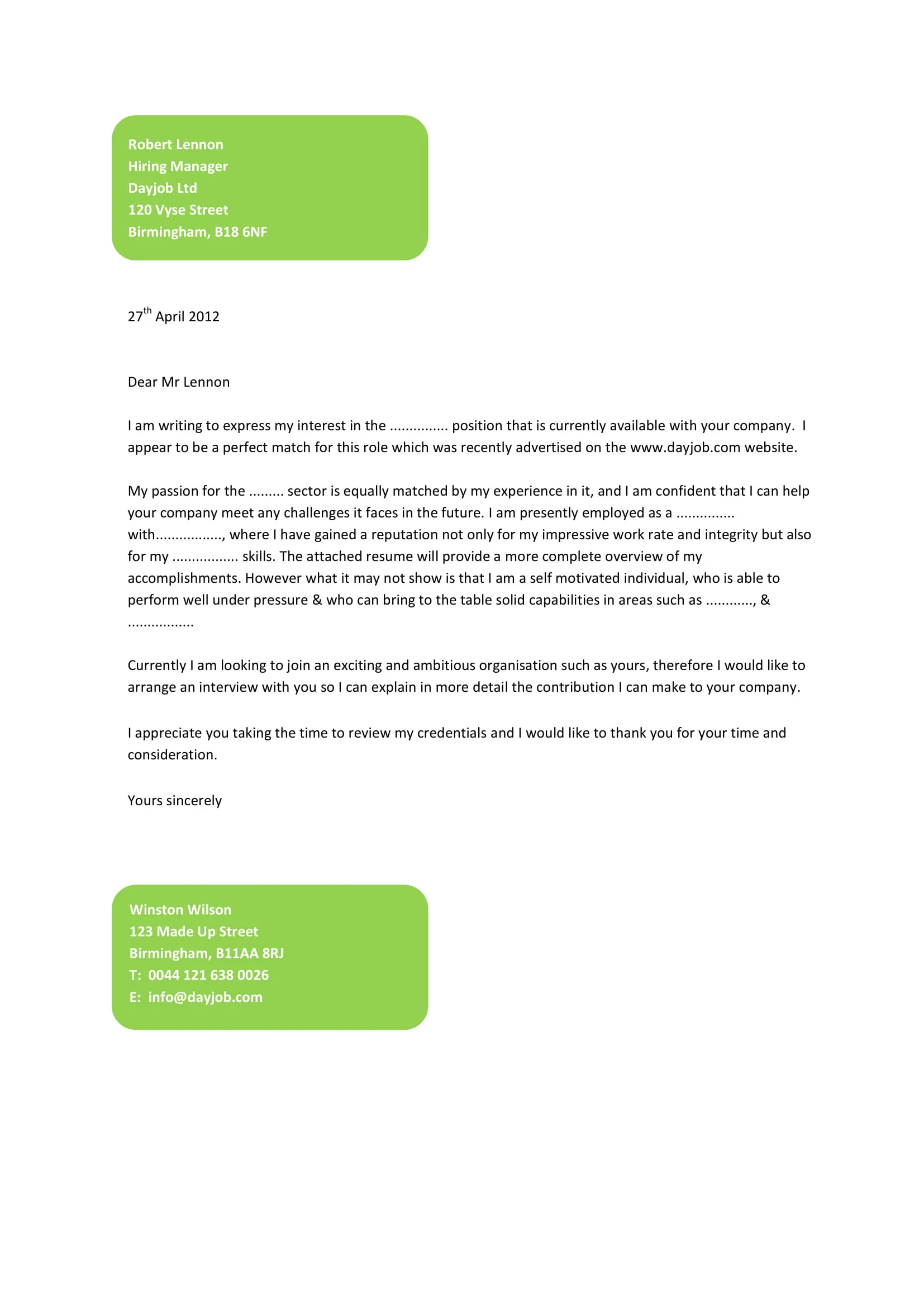
End with a strong closing paragraph that reiterates your interest in the position and the company. Thank the hiring manager for their time and consideration. Include a call to action, such as ‘I am eager to discuss my qualifications further in an interview’ or ‘I am available for an interview at your earliest convenience.’ This signals your eagerness and proactive approach. Reiterate your contact information, and use a professional closing, such as ‘Sincerely’ or ‘Best regards,’ followed by your name.
Proofreading and Editing
Proofreading and editing are critical steps in the cover letter writing process. Mistakes can undermine your credibility and could lead to immediate rejection. Take the time to carefully review your cover letter for grammatical errors, typos, and formatting inconsistencies. Then, read your cover letter out loud, or have a friend or colleague review it. It is crucial to ensure your cover letter is polished and professional.
Common Cover Letter Mistakes to Avoid
Avoiding common mistakes can significantly increase your cover letter’s effectiveness. These mistakes often make a poor first impression and can prevent your application from being considered. Being aware of the most frequent errors will help you avoid them and create a cover letter that impresses the hiring manager.
Generic Cover Letters
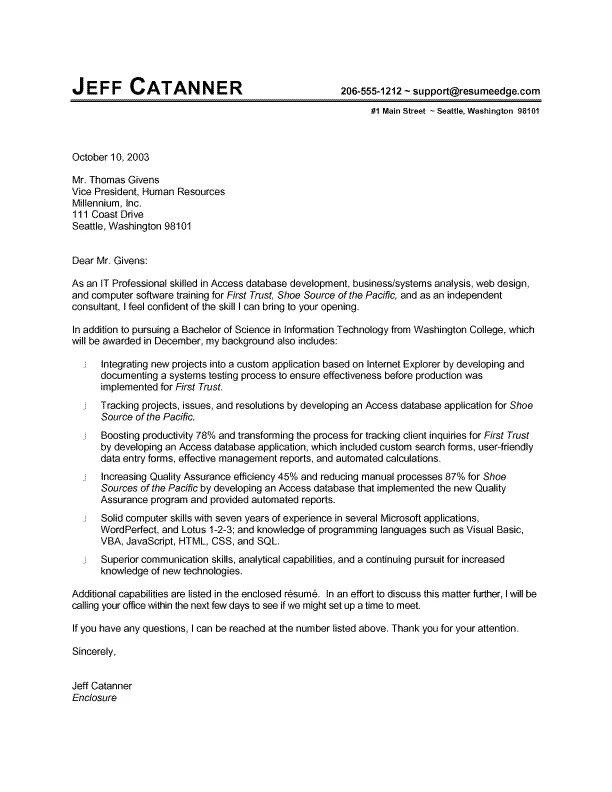
Using a generic cover letter is a major mistake. This demonstrates a lack of effort and interest in the specific role and company. Generic letters are easily recognizable and often convey a sense of disinterest. Always tailor your cover letter to each job application. Customize the content to reflect your research of the company, the specific requirements of the role, and demonstrate how your skills align with their needs. Show the hiring manager that you took the time to understand the company and the position.
Typos and Grammatical Errors
Typos and grammatical errors can immediately undermine your credibility. Such errors can be seen as a lack of attention to detail and professionalism. Proofread your cover letter multiple times. Use grammar and spell-checking tools. Have a colleague review your cover letter to catch mistakes you might have missed. A polished and error-free cover letter leaves a positive impression and demonstrates your commitment to excellence.
Ignoring the Job Description
Ignoring the job description is a significant mistake. Failing to address the specific requirements and keywords in the job description suggests that you have not taken the time to understand the role. Always tailor your cover letter to match the job requirements. Carefully review the job description, highlight the key skills and qualifications, and provide specific examples from your experience to showcase how your qualifications align with the employer’s needs. Demonstrating how your skills match the job is crucial to being considered.
Failing to Proofread
Not proofreading your cover letter is a critical mistake. Proofreading is the final step to ensuring your cover letter is polished and professional. It helps catch any errors you might have missed during the writing process. Read your cover letter multiple times, and consider reading it out loud to catch awkward phrasing. Use grammar and spell-checking tools. Having a friend or colleague review your cover letter can also help you spot errors you may have overlooked.
